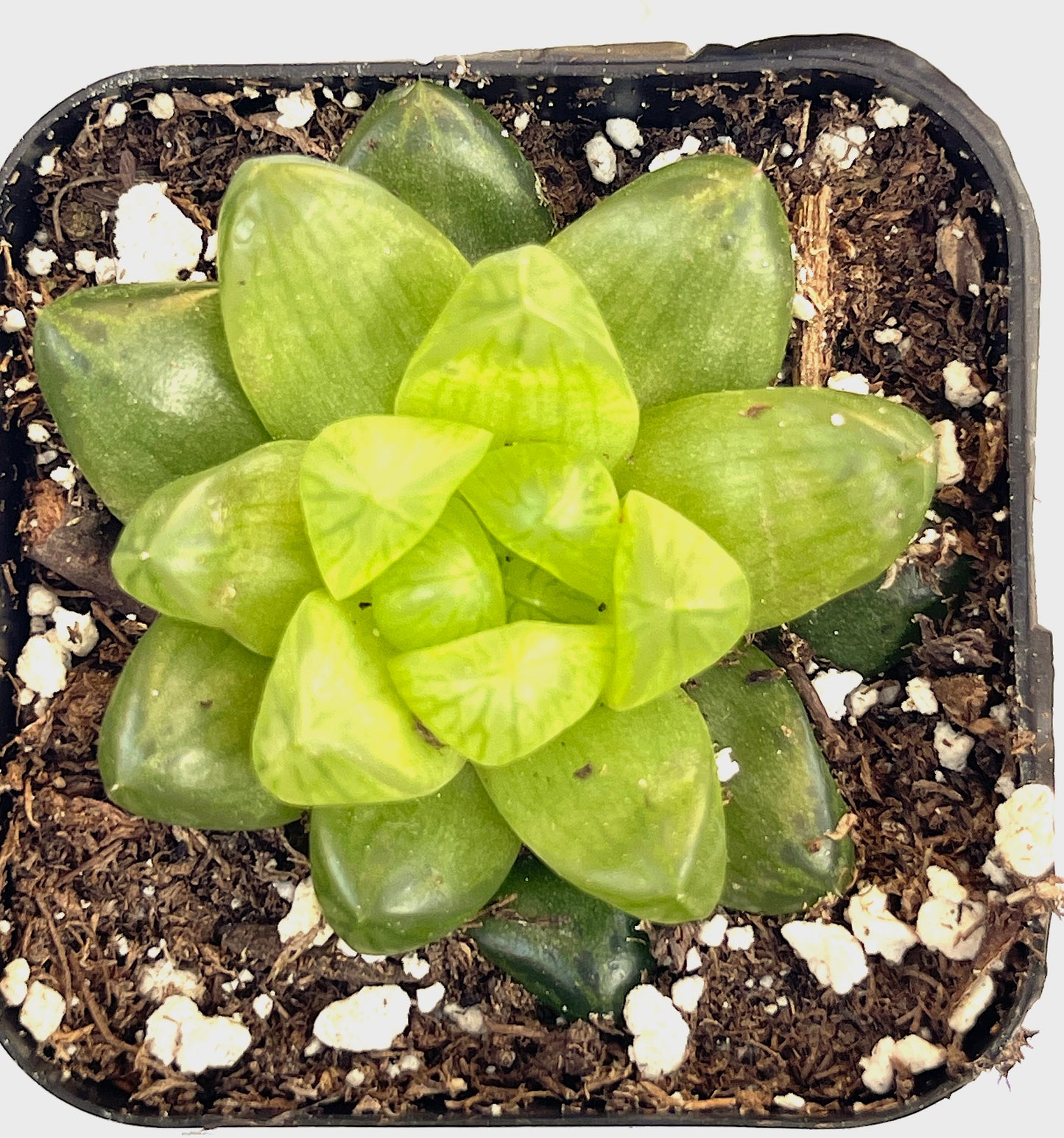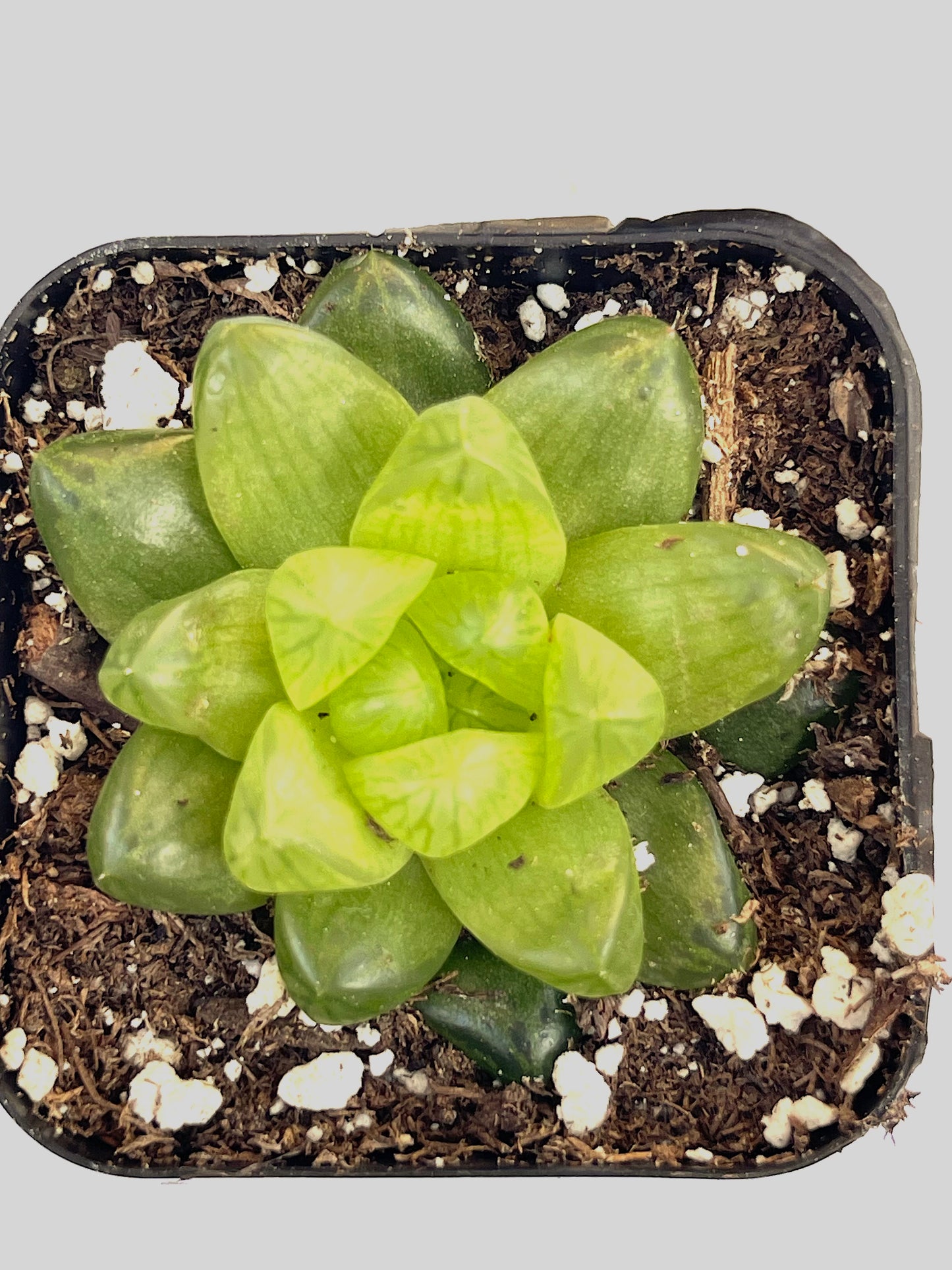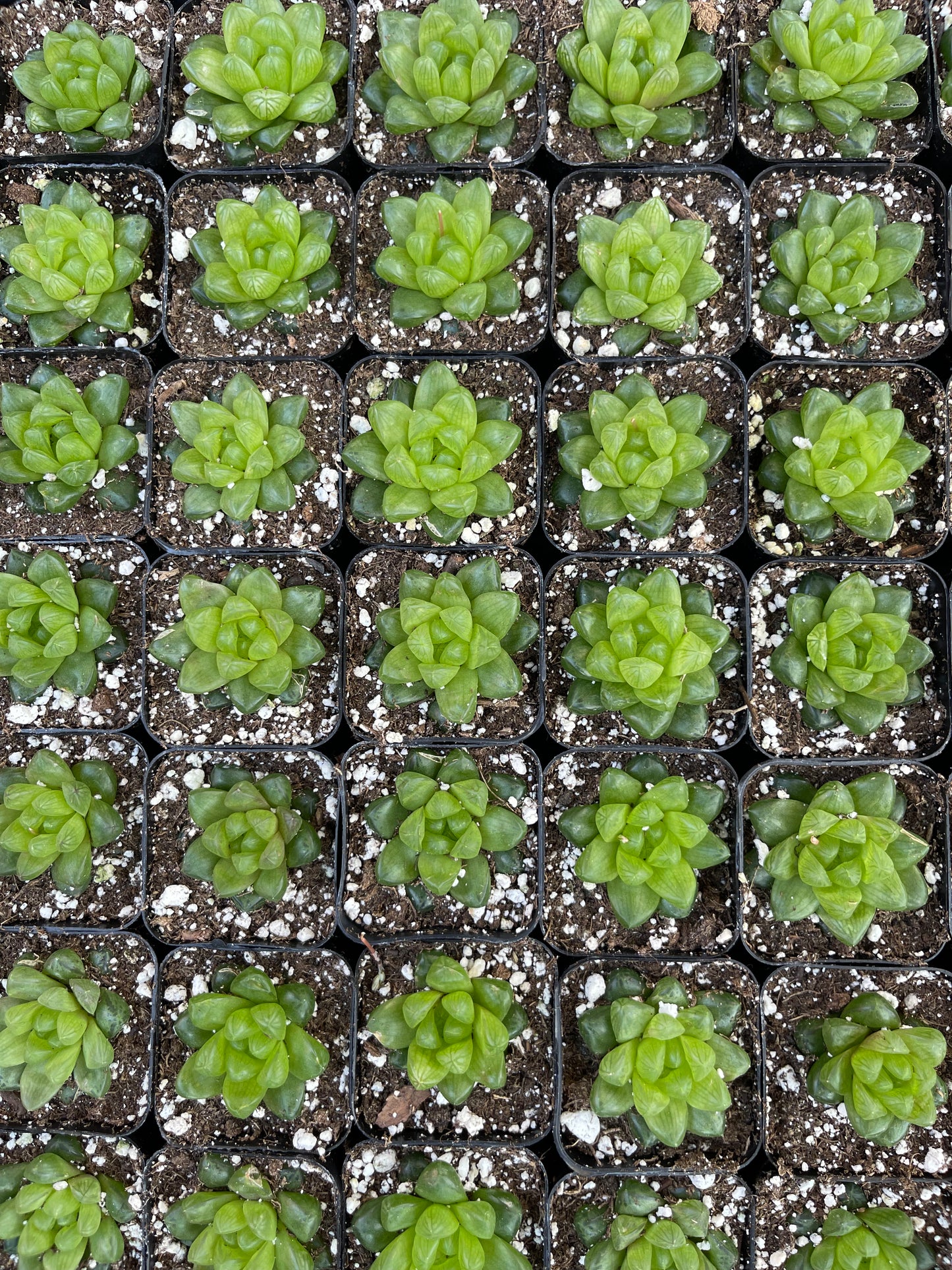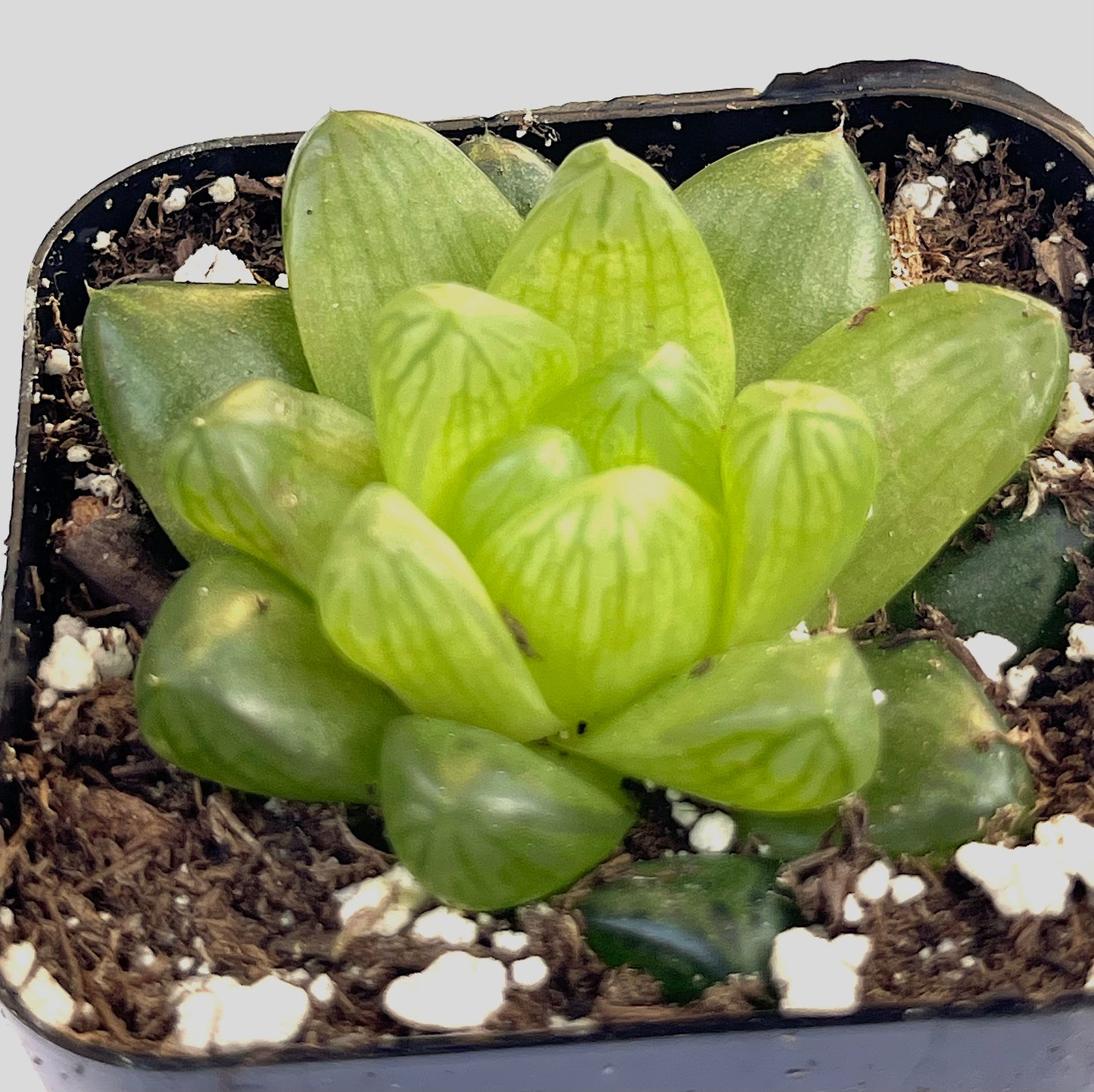1
/
of
4
SEAH
haworthia cymbiformis var. obtusa
haworthia cymbiformis var. obtusa
Regular price
$4.99 USD
Regular price
$7.99 USD
Sale price
$4.99 USD
Unit price
/
per
Couldn't load pickup availability
Haworthia cymbiformis var. obtusa, commonly known as the Cathedral Window Haworthia, is a popular succulent due to its distinctive and ornamental appearance. Here’s a detailed overview in English regarding its morphological characteristics, growth habits, maintenance points, and reproduction method:
Morphological Characteristics
- Leaves: This variety is noted for its plump, translucent leaves that form in a rosette pattern. The leaves are green to pale green and can turn slightly pinkish under strong light. They are smooth, with no spines on the edges, and the tips are often rounded and slightly transparent, allowing light to pass through, resembling stained glass windows of a cathedral, hence the name.
- Size: It grows up to 10 cm in height and spreads outwards with its offsets. The rosettes can reach up to 10-15 cm in diameter.
- Flowers: It blooms with small, white flowers that appear on a slender, up to 30 cm tall inflorescence. However, the flowers are not as showy as the foliage.
Growth Habits
- Light: Prefers bright, indirect sunlight. Direct sun may cause the leaves to scorch, but they do appreciate a bit of morning or late afternoon sunlight.
- Temperature: It thrives in warm conditions but can tolerate temperatures as low as 5°C. Protect from frost.
- Water: This succulent is drought-tolerant. Water thoroughly when the soil is completely dry and reduce watering in the winter to prevent root rot.
Maintenance Points
- Soil: Requires well-draining soil. A cactus or succulent potting mix is ideal.
- Pot: Use a pot with drainage holes to prevent water from accumulating at the bottom.
- Fertilizer: Feed with a diluted succulent fertilizer during the growing season (spring and summer) for best results, usually once a month.
- Pruning: Not typically necessary, but you may remove dead or damaged leaves to keep the plant healthy and attractive.
Reproduction Method
- Offsets: The most common method of propagation is by separating the offsets, which are small plants that grow at the base of the parent plant. Gently remove the offsets and allow the cut to callous over for a few days before planting in well-draining soil.
- Leaf cuttings: Though less common and with a lower success rate compared to offsets, leaves can be used for propagation. Pluck a healthy leaf, let it dry for a few days to form a callus, and then place it on top of the soil until it roots and forms a new plant.
- Seeds: It can also be propagated from seeds, but this method is less common due to the slow growth rate and the difficulty of obtaining seeds.
Haworthia cymbiformis var. obtusa is admired for its ease of care, making it suitable for beginners in succulent gardening. With its distinctive looks and low maintenance requirements, it's a splendid choice for indoor gardens, terrariums, and as a desk plant.
Share







